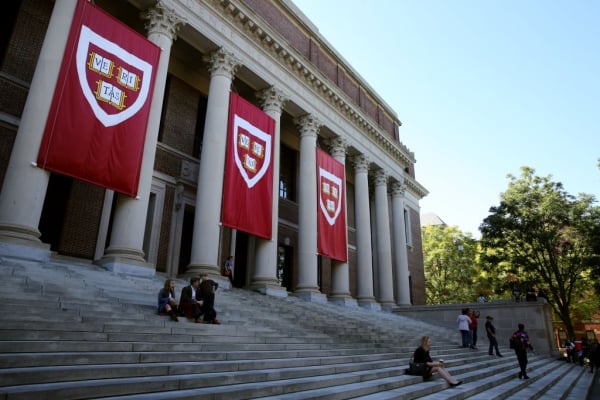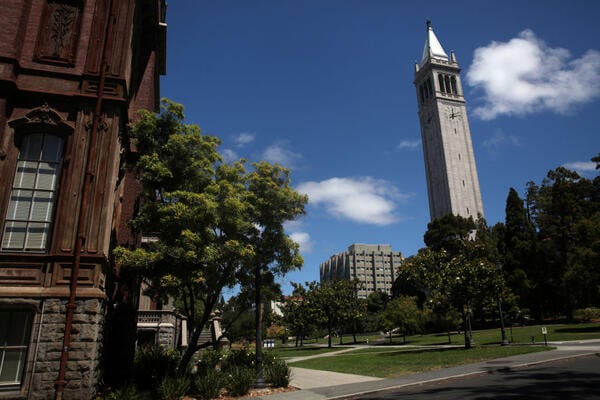Leaders of Nueta Hidatsa Sahnish College were thrilled to find out two years ago that they won a nearly $5 million grant from the U.S. Department of Agriculture to promote Indigenous food and agriculture practices. That five-year grant, which is roughly the same amount as the college’s endowment, funded student internships and several staff positions.
But just as the college was gearing up to work on the project after putting in place the initial pieces, like selecting interns, funds for the program ceased when the USDA’s National Institute of Food and Agriculture froze the grant in February.
The college has already spent about half a million dollars on the project, expecting those funds would be reimbursed, like other government grants, said Twyla Baker, president of Nueta Hidatsa Sahnish College. Now, six students have lost their internships, and the college is scrambling to reassign staff to other projects to avoid having to let anyone go.
“We don’t have a timeline or any type of information as to when or if that [funding] will be restored to us,” Baker said.
She and other tribal college leaders across the country are scrambling to make contingency plans as the Trump administration continues to review, freeze and slash federal grants in a massive effort to downsize government and roll back federal programs they perceive as related to diversity, equity and inclusion. Some have already seen grants disappear, while others are preparing just in case. Meanwhile, staff cuts to the Bureau of Indian Education and the Department of Education—not to mention plans to dismantle the department—are exacerbating fears and uncertainty on campuses.
Tribal college leaders watched nervously as the two tribal colleges administered by the bureau, Haskell Indian Nation University and Southwestern Indian Polytechnic Institute, experienced major layoffs in February, spurring a lawsuit from tribes and students. The cuts sent the two institutions into what some worried was a death spiral, with professor-less classes and mounting infrastructure problems, until those layoffs were reversed in recent weeks.
We’re survivors, and we’ll be here, but it’s going to be a rough couple years, that’s for sure.”
—Dan King, president of Red Lake Nation College
The country’s 37 tribal colleges already live a precarious existence. They tend to serve small, disproportionately first-generation and low-income student populations in remote areas on or near reservations and operate on lean budgets. They depend heavily on federal dollars, and many campuses are struggling with crumbling infrastructure thanks to chronic underfunding from Congress. Some tribal college presidents fear even small changes to federal funding or staffing could mean losing critical student supports, services and academic programs or risk the most vulnerable institutions closing altogether.
“It takes so many different tiny little grant programs and resources woven all across the federal government just to keep the doors open and the lights on,” said Moriah O’Brien, vice president of congressional and federal relations at the American Indian Higher Education Consortium. “Any interruption or disruption or pausing of federal funding and resources or the federal employees that support those programs … could have very disruptive impacts.”
‘Sitting and Waiting’
Nueta Hidatsa Sahnish College isn’t the only tribal college waiting on frozen USDA funds. College of Menominee Nation in Wisconsin, for example, found out that a grant covering 20 student scholarships was suspended, putting those students’ continued enrollment in jeopardy, ProPublica reported.
Baker worries other federal funding sources could be next. At this time of the year, she normally would have received a request for proposals for Title III grants from the Department of Education by now. (Title III funds help to support infrastructure improvements at tribal colleges as well as other minority-serving institutions.)
“We’re sitting and waiting,” she said. “And if those dollars go away, it’s another colossal loss.” Tribal colleges received roughly $82 million in discretionary and mandatory Title III funds last year.
Amid the uncertainty, tribal colleges are tightening their belts. Nueta Hidatsa Sahnish College is considering a travel moratorium and looking into ways to strengthen partnerships with foundations and state lawmakers in hopes of diversifying its funding. Although Red Lake Nation College in Minnesota hasn’t had its grants suspended, the college has frozen hiring, pay increases and nonessential travel. Red Lake Nation is aiming to cut spending by 20 to 25 percent to prepare for any future funding losses.
Dan King, president of Red Lake Nation, said he’s been trying to stress to others, “We’re going to make it through this … We’re survivors, and we’ll be here, but it’s going to be a rough couple years, that’s for sure.”
O’Brien said that AIHEC is working to assess how many institutions have had grants suspended and how colleges are responding to this moment of uncertainty. In the meantime, the group is working to educate federal policymakers about tribal colleges—namely that the federal government is obligated to support them by treaty and that funding for tribal colleges is unrelated to DEI.
“The federal government’s unique responsibilities to tribal nations have been repeatedly reaffirmed by the Supreme Court, legislation, executive orders and regulations … and this legal duty and trust responsibility applies across all branches of the federal government,” she said. As a result, the “conversation about tribal sovereignty and the federal trust and treaty obligations is entirely separate and distinct from the conversation around diversity, equity and inclusion.”
Uncertainty at ED
Tribal college leaders are also anxiously waiting to see what comes of the Education Department after mass layoffs and President Donald Trump’s order to close it down “to the maximum extent appropriate and permitted by law” and “return authority over education to the States.”
O’Brien noted that not only do many funding sources for institutions flow out of the department, but 75 percent of tribal college students are also eligible for the Pell Grant, a federal financial aid program for low-income students.
American Indian communities are incredibly resilient, because we have to be, but [there’s] not an unlimited supply of resources to be resilient with. And so, there’s a breaking point.”
—Sandra Boham, chief operating officer at Native Forward
“We want to make sure that there’s no interruption to the resources that are going to TCUs as institutions and to individual tribal citizens who are students,” she said.
O’Brien also wants to ensure that any funding set aside for tribal colleges, through tribal college–specific or broader federal programs, goes directly to them, rather than being administered by states.
“It’s not clear that those funds would ever get to TCUs,” she said. Plus, “the trust and treaty obligations are between tribal nations and the federal government,” not the states.
Cheryl Crazy Bull, president and CEO of the American Indian College Fund, said it’s hard to know what will happen to department programs, so tribal colleges are preparing for all kinds of scenarios, including programs possibly coming under the auspices of other federal agencies.
“We don’t want the Department of Ed to be dismantled,” she said. “At the same time, if it’s going to be dismantled, what strategies need to be used in order to ensure continued funding?”
Education Secretary Linda McMahon has said that shutting down the department won’t mean funding cuts and said that core functions will continue.
But major reductions in force at the Department of Education and other federal agencies have made it difficult for tribal colleges to find out which of their funding streams may be at risk.
Tribal college leaders stressed that getting through to the right people at the Education Department, the USDA, the Department of the Interior or other federal agencies to ask questions is a challenge in and of itself, let alone budgeting for an uncertain landscape.
Not being able to even “get ahold of” the people who administer grant programs “causes a lot of worries for people, too,” said King at Red Lake Nation. “It’s very stressful. It’s chaotic and it’s unpredictable right now.”
What’s at Stake
Tribal college advocates worry some of these institutions wouldn’t survive federal funding losses.
While some tribal colleges have managed to scrape together meager endowments, many operate on low reserves. Some have as little as 90 days’ worth of operating funds on hand at any given time, said Sandra Boham, chief operating officer at Native Forward, a Native American scholarship provider, and a former president of Salish Kootenai College.
“American Indian communities are incredibly resilient, because we have to be, but [there’s] not an unlimited supply of resources to be resilient with,” she said. “And so, there’s a breaking point.”
Tribal college leaders are also concerned about the ripple effects if colleges are forced to cut down on student supports and services.
“You don’t have the big travel budgets to trim,” Boham said. “You don’t have the big athletic budgets to trim. You’re talking support and instructional staff and shuttering buildings or those kinds of things, and that is not a pleasant conversation to have.”
O’Brien described tribal colleges as “anchors of their community,” as well, that provide “not just individual classes, but often [serve] as a hub for the community, providing all kinds of different [services] from GED classes to certificate programs to community space to having their libraries open to the community.”
Baker said the value of tribal colleges “is not a difficult story to tell,” but “just the fact that we’re having to tell it is pretty frustrating.”
Some of these institutions “function on the brink,” Baker said, and they serve “some of the poorest parts of our nation. If it weren’t for tribal colleges, some of these students wouldn’t access higher education at all.”








